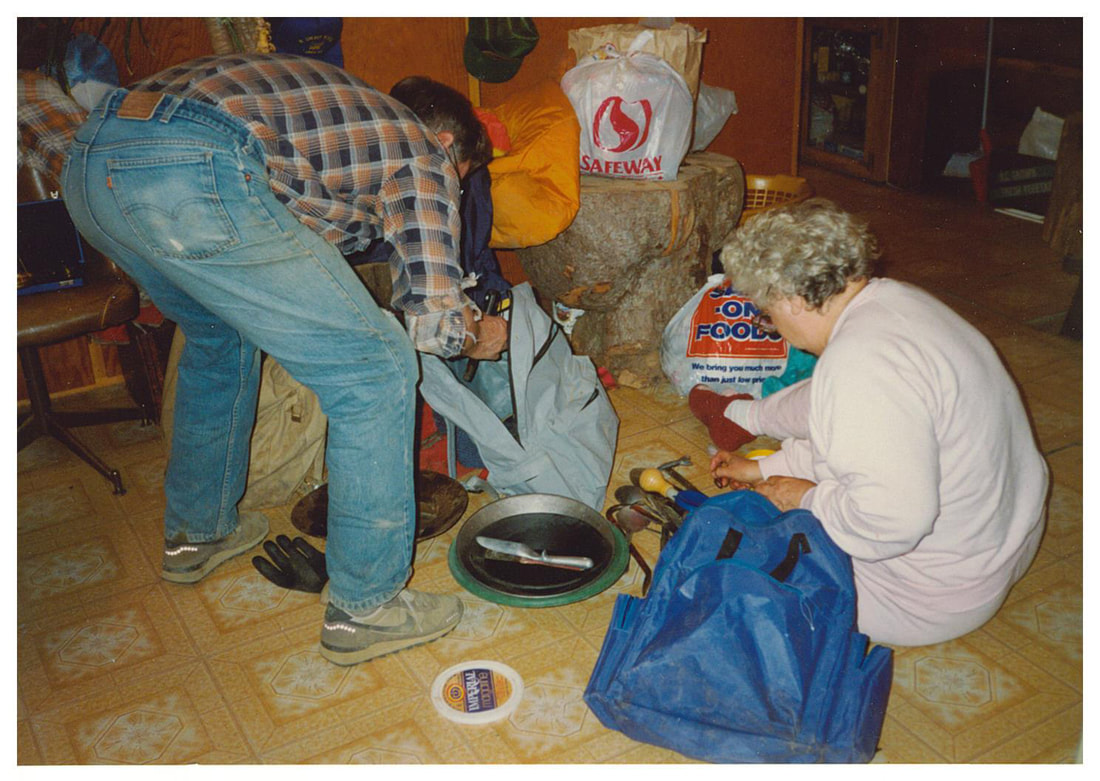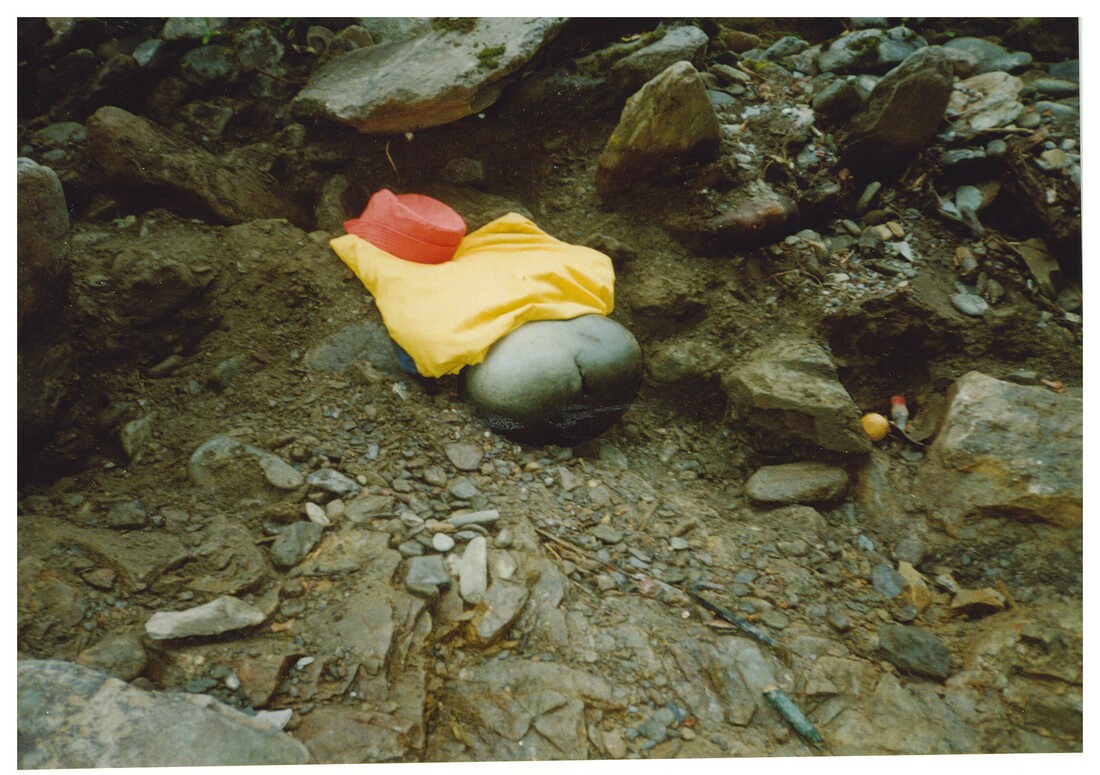To Art Sept 1989
"Our Gold Panning Days"
From
Cledia, nina, and Margaret
|
In honor of all the empty chairs at Christmas and the New Year, I would like to share some memories passed down to me.
It was late summer of 1986. I was ten years old living in a cabin on Cariboo Lake. It was just Dad, Mom and myself in this remote wilderness. To have visitors from the sunshine coast and to see my aunt Marg and cousin Pat was exciting for me. What was exciting to our visitors was finding some gold. Cledia and Nina were friends of aunt Marg. They had never panned for gold before but the stories and allure was enough for them to seek some adventure. |
|
Art was of great interest to them. As a young teen in the 1930's he was working the creeks with his uncle. His knowledge was living history of the area.
We all packed our gear. Gold pans, shovels, pry bars, soup spoons, sniffer containers, rubber boots, gloves and of course some food. We went to Keithly Creek. This was day one for me...50years later for him. Dad took the truck up to the entrance of a trail that he walked as a boy. |
|
Before long Cledia and Nina were filling their own pans. With smiles ear to ear they found a spot to pan their diggings in the creek.
This is how we would spend the day. The fall is the best time for a low water table and the bugs are a lot less. Keithly Creek in its day, one side was worked, and then it was diverted and other side worked. Then the Chinese worked this area. At $20 per ounce in the gold rush days, it's considered worked out. At $300 per ounce in the mid 1980's, it's valuable real-estate. Some land marks can't be made up!
The caption to this photo was "found a bum on keithly" You can see in the background how the bedrock has its own riffles. Working with a small flat bar and kitchen spoons is how you work the bedrock by hand. No machine could be as thorough as doing this work by hand. You can see all the boulders and the fine material around them and it proves to be promising. Big rocks mean big gold...and here is a big ass! The water current carries the gold until it can settle somewhere. The big rocks interlocked helps the gold settle. |
From above the gravel pit, the trail follows up and along the north side of Keithly Creek. Along the way are rock piles that were created when the Chinese mined the area. The Chinese were very thorough in their mining practices of the time. These rocks were all washed and piled with care. The trail itself was well worn and in some parts, flat stones were placed so long ago that moss had covered them.
"Careful stepping on the moss covered rocks. When its wet, its grease lightning" Dad cautioned. The trail empties out on what we call lower Keithly. Once there we settled into the area. packs were unloaded and dad began showing all of us how to pan. Lunch time. It is early September and the sun is warm. Later in the day we would light a fire for a spot to warm our hands.
The creek water is always cold and makes your bare hands numb as you pan. You have to learn quickly as to what material holds the best chance for gold. The history of this creek suggests the old timers only took what was easy. Each creek in this area has its own fineness for gold. This means that Keithly creek, Weaver Creek, the Four Mile Creeks and the Snowshoe Creeks of Yanks Peak have their own separate source of gold...these sources have never been found. However, dad knew the places on Keithly Creek where the source gold would wash down from up higher. Here we are back at the cabin. A little bit of fine gold and flakes to sort out.
Who gets the most gold in a day? A gram or two was a good day. Sometimes you get really lucky and find some nice gold. These are some of my best memories and at a time when the world was fresh and new. Looking back I think it made everyone feel like the world was fresh and new. To explore one's sense of adventure and see the results of their effort. Thank you - Leighton Woolsey (Aka) Mitch Mortensen |







